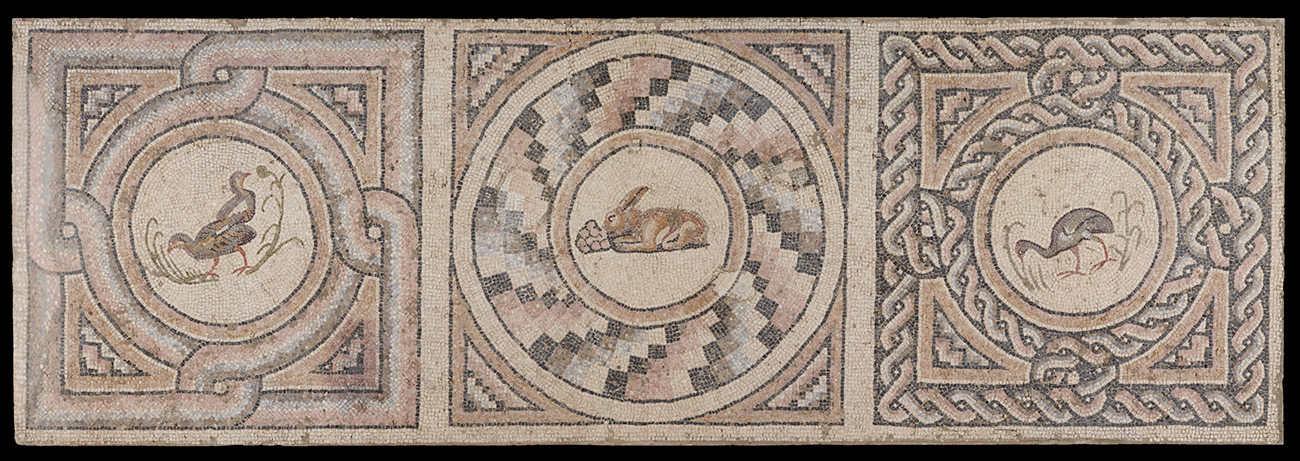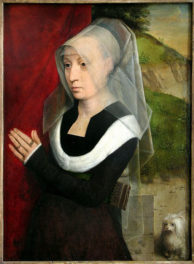
Spring officially began last month, but since most of us are unexpectedly staying indoors these days we can still enjoy the upcoming season with images of cute bunnies in Getty’s online collection. I grew up with rabbits as pets and although I no longer have them as soft furry companions, bunnies have always held a special place in my heart. So I was immediately thrilled to take on the task of finding bunnies in the Getty collection. It felt like a nice distraction from current events and gave me an opportunity to reminisce about my childhood days of playing with my pet bunnies.

Untitled, about 1970s, William Eggleston. Chromogenic print, 3 15/16 × 5 7/8 in. The J. Paul Getty Museum, Los Angeles, 2007.64.4. Gift of Susan Steinhauser and Daniel Greenberg. © Eggleston Artistic Trust

Chandler Weston holding a chocolate rabbit, April 26, 1911, Edward Weston. Gelatin silver print, 5 1/16 × 3 3/8 in. The J. Paul Getty Museum, Los Angeles, 86.XA.718.9. © 1981 Arizona Board of Regents, Center for Creative Photography
There are many theories about why rabbits are associated with spring, but the most popular theory is that rabbits symbolize fertility and new life. Within Getty’s collection there are images of rabbits that are simply charming, and some that take on a symbolic meaning in the Christian faith as a sign of purity, and in antiquity as a sign of vitality.
Two Photographs of Adorable Rabbits

Rabbit on tree stump, about 1890, G.S.P. Gelatin silver print. The J. Paul Getty Museum, Los Angeles, 84.XC.870.729. Digital image courtesy of Getty Open Content Program

Two rabbits on a cushion, about 1865, Henry Pointer. Albumen silver print. The J. Paul Getty Museum, Los Angeles, 84.XD.1157.2031. Digital image courtesy of Getty Open Content Program
The double image on the left was taken with a stereoscope, a device depicting left-eye and right-eye views of the same scene, as a single three-dimensional image. The image on the right was taken by Henry Pointer, a British photographer in the 1870s who became well known for a series of carte-de-visite photographs that featured his pet cats in a variety of poses. In this photo he switched it up and choose two rabbits as his subjects.
A Hare in the Forest

A Hare in the Forest, about 1585, Hans Hoffmann. Oil on panel. The J. Paul Getty Museum, Los Angeles, 2001.12. Digital image courtesy of Getty Open Content Program
Nibbling on a leaf pulled from a stalk of Lady’s Mantle, an alert hare sits at the edge of a pine forest. Unlike the darkness one would expect to find in a forest, Hans Hoffmann, German-born artist of the late 1500s, painted a theatrically illuminated scene. Hoffmann’s golden-brown hare is based on Albrecht Dürer’s famous and influential watercolor Hase, which shows a hare against a plain ground.
Hoffmann’s hare differs from Dürer’s, however, appearing amid a striking arrangement of elegant plants and insects. At the time it was painted, this arrangement of nearly life-size subjects was unique, not only within Hoffmann’s body of work but also within the tradition of German nature study.
Medieval Rabbits

Hares, about 1430–1440, French. Tempera colors, gold paint, silver paint, and gold leaf on parchment, 10 3/8 × 7 1/4 in. The J. Paul Getty Museum, Los Angeles, 87.MR.34.16. Digital image courtesy of Getty Open Content Program

Initial B: The Arrest of Saint Agnes, about 1320–1325, French. Tempera colors, gold leaf, and ink on parchment, 6 9/16 × 4 3/8 in. The J. Paul Getty Museum, Los Angeles, 83.ML.98. Digital image courtesy of Getty Open Content Program
In the medieval period, rabbits were not thought of as the cuddly pets they are today but instead were hunted for food. The image on the left is from a 15th-century manuscript titled Livre de la chasse (or Book of the Hunt) and shows three rabbits happily eating leaves. The manuscript is a copy of the original 14th-century text composed by Gaston Phébus, count of Foix, and was the most popular guide for hunters during the Middle Ages.
The manuscript in the Getty’s collection features over sixty images covering hunting-related topics ranging from the use of camouflage to proper veterinary techniques and the behavior of certain kinds of prey. The text surrounding the image of the rabbits describes the different kinds of rabbits and the ways in which a skilled hunter could easily catch them, including information about which dogs were the best for hunting rabbits.
Rabbits were also often depicted in medieval manuscripts as good and harmless creatures and represented purity and innocence. The image on the right comes from a book called a Breviary, which was a collection of prayers for Christian church services. The margins of medieval manuscripts often had imagery that seems unrelated to the central images, but sometimes provides a commentary or explanation.
Here, the rabbits are being hunted by dogs, and seek shelter in their rabbit hole. The image in the decorated initial at the top of the page shows the arrest of St. Agnes, a Christian saint martyred for her faith. The hunt of the rabbits in the margins below may be a kind of visual echo of the men pursuing St. Agnes.
Rabbit Mosaics

Panel from a Mosaic Floor from Antioch, about A.D. 400, Roman (Syrian). Mosaic, 56 1/2 × 168 × 2 1/4 in. The J. Paul Getty Museum, Villa Collection, Malibu, California, 70.AH.96.1. Digital image courtesy of Getty Open Content Program
This mosaic floor comes from a small bath building that was discovered by a local farmer near Toprak-en-Narlidja in Syria, located on the slopes of Mount Silpios, east of the ancient city of Antioch. The ancient structure from the late fourth century BC is known as the Bath of Apolausis. It was uncovered in 1938 during a series of excavations made at Antioch and its vicinity. The main scene of a hare or rabbit eating a bunch of grapes is framed on either side by representations of birds pecking at foliage. The dominant characteristic of the mosaic is its mesmerizing assortment of geometric patterns. The significance of the motif is not always clear, but it may relate to the cycle of life, as hares and rabbits are often associated with vitality and fertility.
This symbolic meaning, appropriate also in the decoration of the Bath of Apolausis and its reference to the good life, may have contributed to the continued use of the image in later Christian iconography, which centered on themes of eternal life.




What a delightfully wonderful piece with such a great fun focus…bunnies! Who would have thought of putting these objects together. Thank you for this wonderful read and eye candy!
The photography taken with a steoscope can be seen in 3D : you must not look at any rabbit, but look vaguely in the middle, and then you zoom, and three rabbits appear, the one in the middle is in 3D.
Ihave been so much interrested by this first visit of the Getty museum, you do splendid and imaginative work !
Sorry if my english is not good, it’s a long time I did not practice.
G R
Most of the rabbits I have seen in early paintings were dead, the bounty of hunters. The depiction of A Hare in the Forest,by Hans Hoffmann is delightful and makes me want to visit the Getty again when this is over and view it in person. Thank you for an insightful article which introduced me to a work of art that i might have never viewed.
Desiree – bunnies are wonderful house pets for city dwellers. You might take up having a cute pet bunny to brighten the days indoors. The San Diego House Rabbit Society has rescued rabbits for adoption. They run the only rabbit shelter in SoCal. BTW – It wasn’t labeled but the first picture looks like it is from a milleflore tapestry. So many of those amazing tapestries with cute rabbits. Thank you so much for the exhibition.
Nicely done! I especially enjoyed the Eggleston and Weston photos as they were so unexpected. Does the Getty have any medieval manuscripts in which anthropomorphic rabbits are hunting or playing musical instruments or the like?
Thank you for your gentle pedagogy in the cuteness. I suspect you love teaching by showing as much as I love learning by seeing.
Thank you for using this time to further share the depth of the Getty in both collection and scholarship. How fortunate to have time to read what has so carefully been made available.
I love Rabbits. I have 3 outside bunnies; King Buck, Prince Nipper, and Stormy. Thank you for the great Rabbit article.
Rabbits have always had a special place in my stomach & thru that the entire rest of my body…